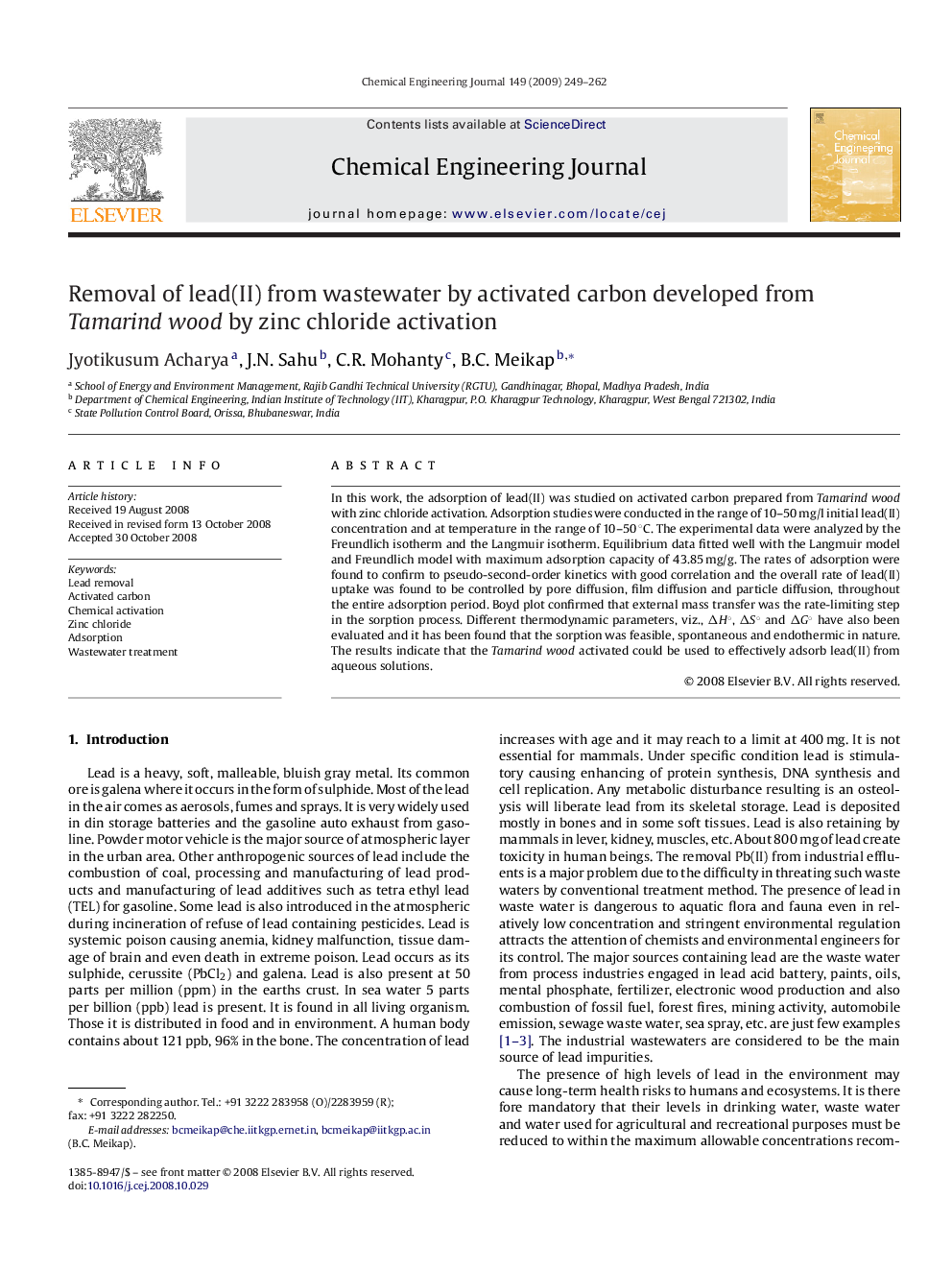| Article ID | Journal | Published Year | Pages | File Type |
|---|---|---|---|---|
| 152321 | Chemical Engineering Journal | 2009 | 14 Pages |
In this work, the adsorption of lead(II) was studied on activated carbon prepared from Tamarind wood with zinc chloride activation. Adsorption studies were conducted in the range of 10–50 mg/l initial lead(II) concentration and at temperature in the range of 10–50 °C. The experimental data were analyzed by the Freundlich isotherm and the Langmuir isotherm. Equilibrium data fitted well with the Langmuir model and Freundlich model with maximum adsorption capacity of 43.85 mg/g. The rates of adsorption were found to confirm to pseudo-second-order kinetics with good correlation and the overall rate of lead(II) uptake was found to be controlled by pore diffusion, film diffusion and particle diffusion, throughout the entire adsorption period. Boyd plot confirmed that external mass transfer was the rate-limiting step in the sorption process. Different thermodynamic parameters, viz., ΔH°, ΔS° and ΔG° have also been evaluated and it has been found that the sorption was feasible, spontaneous and endothermic in nature. The results indicate that the Tamarind wood activated could be used to effectively adsorb lead(II) from aqueous solutions.
